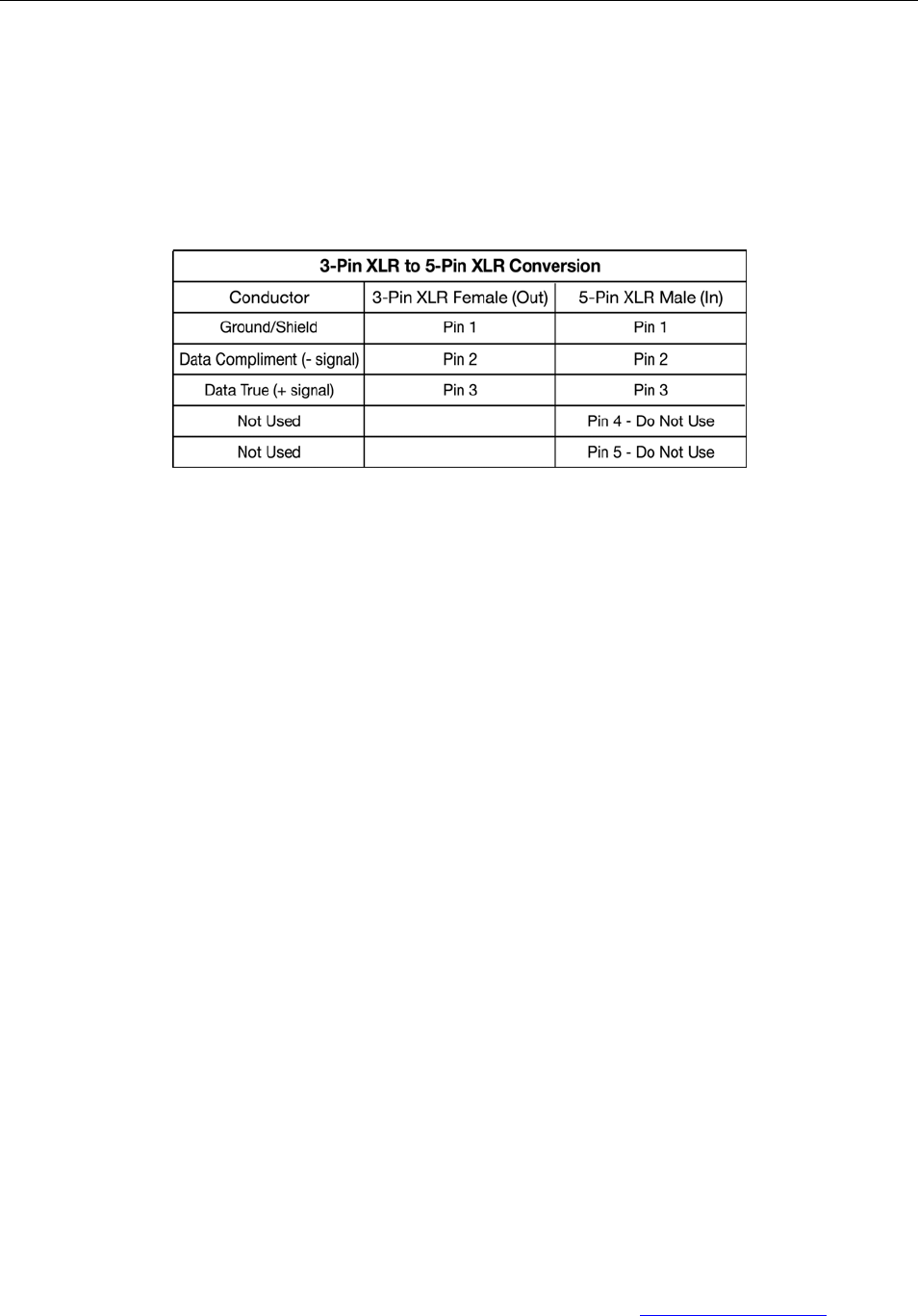
Design LED 12 Brick II ™
©Elation Professional, Los Angeles Ca. 17 www.ElationLighting.com
5-Pin XLR DMX Connectors. Some manufactures use 5-pin XLR connectors for DATA
transmission in place of 3-pin. 5-pin XLR fixtures may be implemented in a 3-pin XLR DMX
line. When inserting standard 5-pin XLR connectors in to a 3-pin line a cable adaptor must
be used, these adaptors are readily available at most electric stores. The chart on the next
page details a proper cable conversion.
Understanding Fixture DMX addressing;
All fixtures should be given a DMX starting address when using a DMX controller, so the
correct fixture responds to the correct control signal. This digital starting address is the
channel number from which the fixture starts to “listen” to the digital control information sent
out from the DMX controller. The allocation of this starting DMX address is achieved by
setting the correct DMX address on the digital display located on the head of the fixture.
You can set the same starting address for all fixtures, or a group of fixtures, or set different
address for each individual fixture. Be advised that setting all you fixtures to the same DMX
address will subsequently control all fixtures in the same fashion, in other words, changing
the settings of one channel will affect all the fixtures simultaneously.
If you set each fixture to a different DMX address, each unit will start to “listen” to the channel
number you have set, based on the quantity of control channels (DMX channels) of each
fixture. That means changing the settings of one channel will only affect the selected fixture.
In the case of the Design LED 12 Brick II ™, which is a 3 channel fixture (default), you should
set the starting DMX address of the first unit to 1, the second unit to 4 (3 + 1), the third unit to
7 (4 + 3), and so on. The chart on page 20 details the proper starting DMX address dipswitch
setting combination.


















